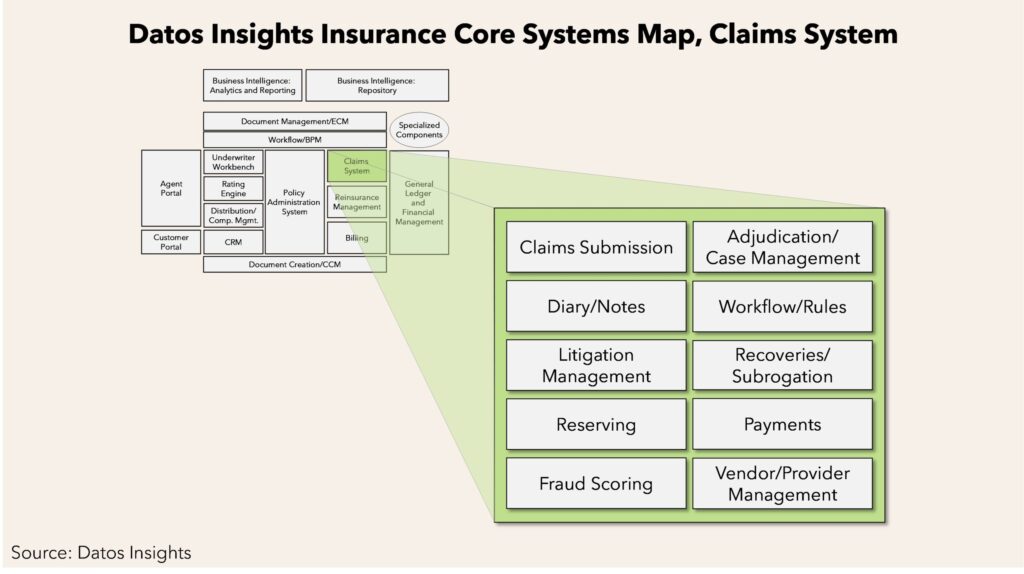The insurance industry is undergoing significant transformation, including in how life, annuity, and benefits (L/A/B) insurers manage claims processes. With over half of insurers still anchored to legacy platforms, the gap between customer expectations and operational capabilities continues to widen. This disconnect creates significant challenges in efficiency, accuracy and customer experience—leaving unprepared insurers at a competitive disadvantage. Our recent report, Market Navigator: Life/Annuity/Benefits Claims Systems, examines how forward-thinking insurers are revolutionizing their claims operations.

The Push for Modernization: Customer Expectations Leading the Way
Today’s insurance customers expect the same seamless digital experiences they receive in other industries. While property and casualty (P/C) insurers have established high standards with real-time processing capabilities, many L/A/B insurers lag behind them. Consumers and agents now expect real-time access to claims information across all devices, and failing to meet these expectations puts insurers at a competitive disadvantage.
To address these challenges, modern claims systems now incorporate digital-first features:
- AI-powered call centers that reduce wait times and improve resolution rates
- Interactive chatbots that provide 24/7 support for routine inquiries
- Self-service portals that empower customers to track claims progress in real time
These technologies enable insurers to support both agents as well as claimants through what can be confusing processes during stressful times. For example, some carriers now use AI tools to generate contract summaries that help claimants understand their options and navigate the claims process with greater confidence.
Artificial Intelligence and Analytics: The New Essential Components
AI and advanced analytics have transitioned from competitive advantages to essential components of modern claims systems. Forward-thinking insurers leverage these technologies to:
- Enhance fraud detection with pattern recognition that identifies suspicious claims
- Optimize outcome management through predictive modeling
- Improve decision-making with data-driven insights
The integration of AI creates more consistent claim handling while allowing insurers to deploy senior staff expertise more strategically.
These capabilities also extend to better data management, with analytics-driven fraud detection and scoring becoming increasingly sophisticated. Insurers can now implement triaged straight-through processing for simple claims while routing more complex cases to specialized adjusters. Additionally, AI tools can assist customers directly and potentially reduce conversion risks when upgrading from legacy systems.
Technical Evolution: Workflow and Configuration Enhancements
Today’s claims systems represent a significant technical leap forward from legacy platforms. Modern solutions feature:
- Integrated workflow management that streamlines process efficiency
- Browser-based interfaces accessible from any location
- Service-oriented architectures that enhance integration capabilities
- Robust cloud deployment options that improve scalability
Perhaps most importantly, they also include user-friendly configuration tools that allow business users to create workflows, pages, forms, tasks, and integration points without extensive technical knowledge.
Built on cloud-native foundations, these platforms support both traditional and cloud-based deployment models. The configuration capabilities enable insurers to incorporate their intellectual capital into processing workflows, yielding tangible business benefits including operational efficiency, improved functional capabilities, and better data management.
The architectural improvements also provide greater flexibility, with many systems offering API integrations alongside traditional file integrations. This modular approach allows insurers to disaggregate existing core system environments and implement modern architectural capabilities incrementally, rather than attempting risky “big bang” replacements.
Transforming Claims Operations into a Strategic Asset
As L/A/B insurers navigate their digital transformation journeys, modernizing claims systems provides an opportunity to convert what has traditionally been viewed as a cost center into a strategic differentiator. While not always highlighted as a top priority compared to policy administration platforms, these systems remain essential to delivering exceptional customer experiences and operational efficiency.
The marketplace now offers rich options for insurers looking to upgrade their claims capabilities, with solutions ranging from AI-driven insurtechs to established vendors with decades of experience. By focusing on customer expectations, embracing AI and analytics, and leveraging modern technical architectures, insurers can transform their claims operations into strategic assets that drive competitive advantage in an increasingly digital insurance landscape.
To learn more about how modern claims systems can transform your operations and evaluate the leading vendors in the claims management space, access our full report: Market Navigator: Life/Annuity/Benefits Claims Systems.

